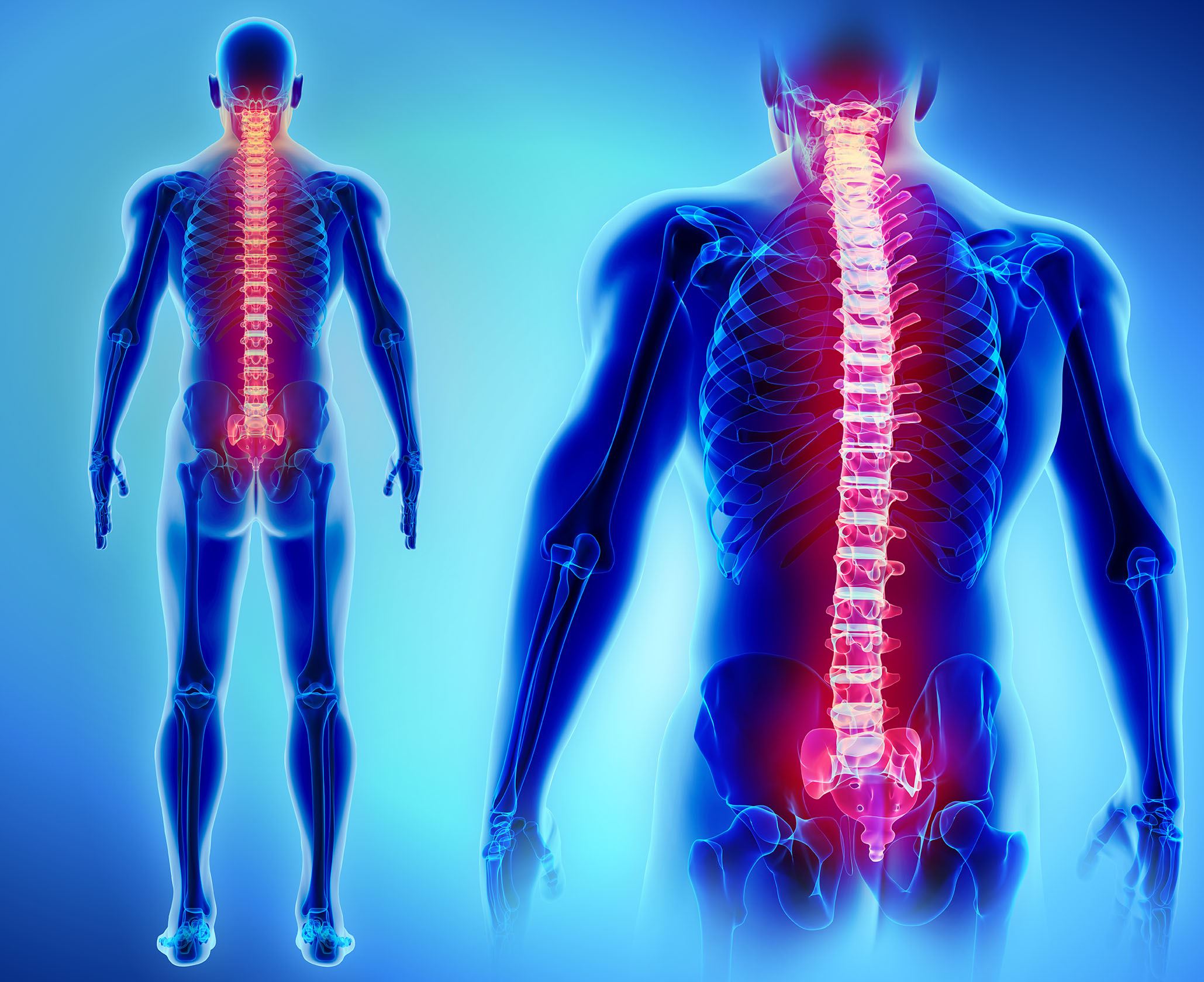
< Back
spine
Definition
The spine is a complex structure that is made up of many different bones, ligaments, and discs. It is responsible for supporting the head and torso, protecting the spinal cord, and allowing us to move.
The spine is divided into five regions:
- Cervical spine: This is the top region of the spine. It has 7 vertebrae, and it supports the head.
- Thoracic spine: This is the middle region of the spine. It has 12 vertebrae, and it supports the rib cage.
- Lumbar spine: This is the lower region of the spine. It has 5 vertebrae, and it supports the torso.
- Sacrum: This is the fused region of the spine. It has 5 fused vertebrae, and it is attached to the pelvis.
- Coccyx: This is the small, triangular bone at the bottom of the spine. It is made up of 4 fused vertebrae.
The spine is a very important structure, and it is essential for our health and well-being. It is important to take care of our spine by maintaining good posture, exercising regularly, and avoiding activities that put too much strain on the spine.
How can the word be used?
The cactus has sharp spines.

Different forms of the word
Noun: spine (plural: spines).
Adjective: spinous.
Verb: to spine.
Etymology
The word "spine" comes from the Old English word "spinna", which means "thorn" or "spike". It was first used in English in the 13th century to refer to the backbone of an animal.
The word "spinous" means "having a spine".
The word "to spine" means "to pierce with a spine".
Question
What are the five regions of your spine?
AQA Science Exam Question and Answer
Question:
Explain the structure and function of the human spine. Discuss the importance of intervertebral discs in maintaining spinal health.
Answer:
The human spine, also known as the vertebral column or backbone, is a complex structure composed of 33 vertebrae stacked in five regions: cervical, thoracic, lumbar, sacral, and coccygeal. It serves multiple vital functions, including supporting the body's weight, protecting the spinal cord, and facilitating movement.
Each vertebra consists of a vertebral body, a neural arch, and various processes that aid in muscle attachment and articulation. The spine's natural curvature allows for shock absorption and flexibility. Between most vertebrae lie intervertebral discs, fibrocartilaginous cushions that play a crucial role in spinal health. These discs comprise a tough outer layer called the annulus fibrosus and a gel-like inner core known as the nucleus pulposus.
Intervertebral discs function as shock absorbers, distributing pressure evenly across the spine and preventing vertebrae from grinding against each other during movement. They contribute to the spine's flexibility while maintaining stability. However, as we age or subject our spine to excessive strain, these discs can degenerate or herniate, causing discomfort and restricted movement.
Understanding the structure and importance of intervertebral discs is essential for maintaining a healthy spine. Proper posture, regular exercise, and body mechanics can help prevent disc-related issues and ensure the spine's optimal function throughout life.